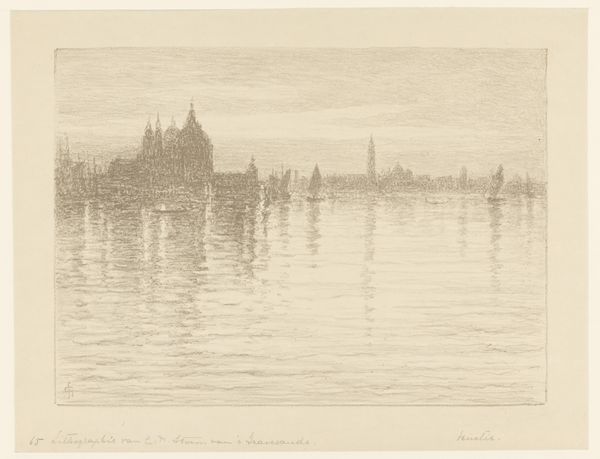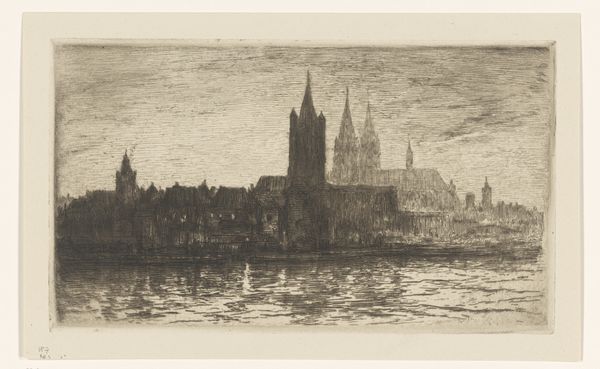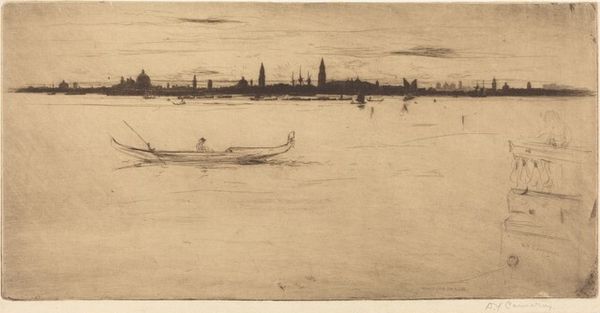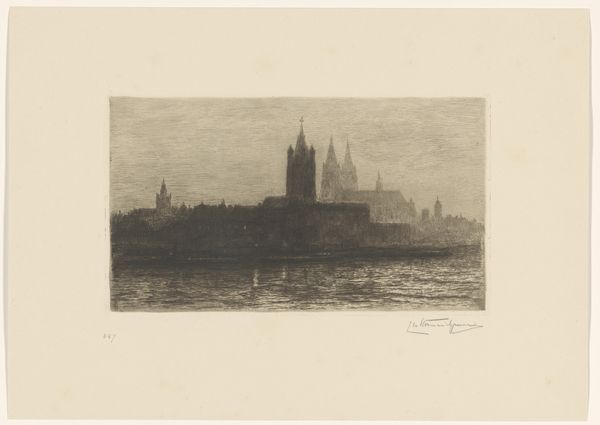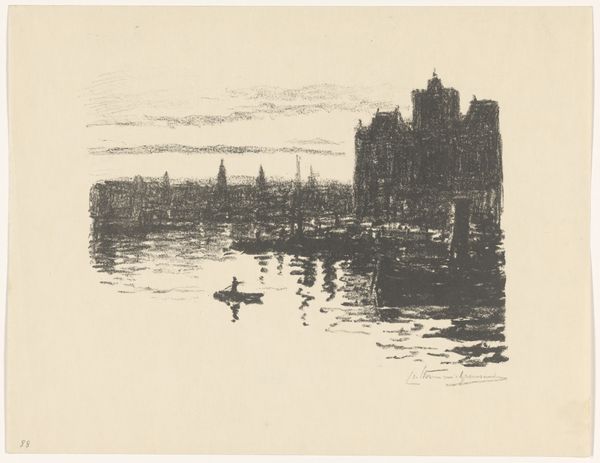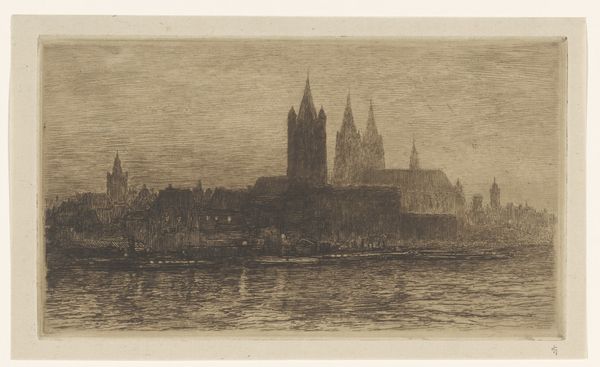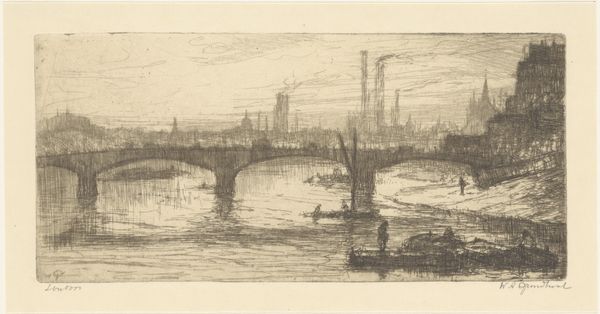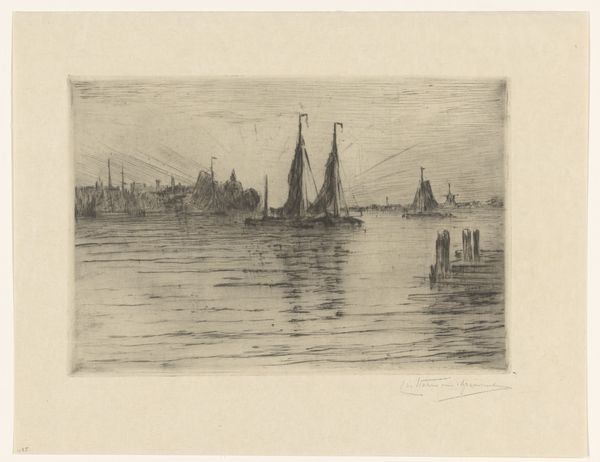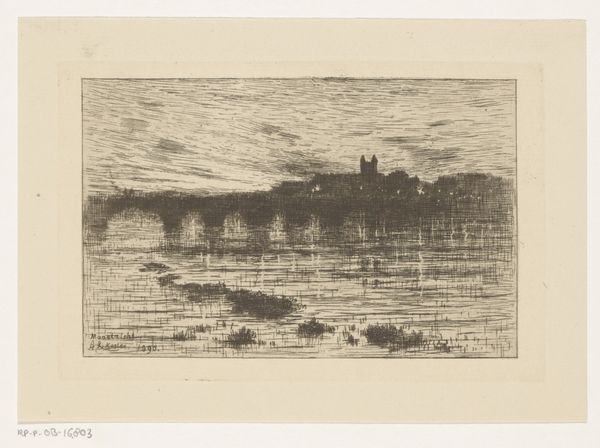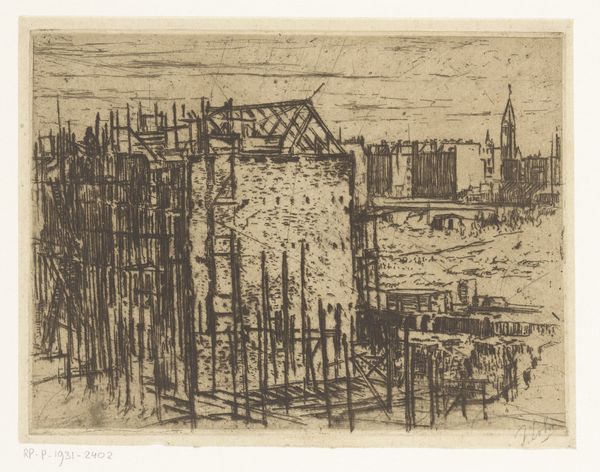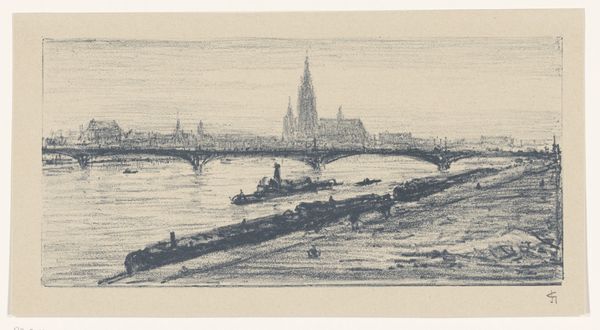
print, etching
# print
#
etching
#
landscape
#
river
#
cityscape
#
realism
Dimensions: height 347 mm, width 536 mm
Copyright: Rijks Museum: Open Domain
Editor: This is "Glacons sur le Rhin," an etching by Carel Nicolaas Storm van 's-Gravesande, created sometime between 1851 and 1924. There's something melancholic about it, with the cold river and the city barely visible in the background. What do you see in this piece, beyond the surface level depiction? Curator: What strikes me is the quiet tension inherent in this landscape. It's easy to see it as simply a scene, but if we consider the social and economic context in which it was created, questions arise. The Rhine, then as now, was a vital trade artery. How might industrial development be implicated in how the river is represented here? And furthermore, who profits from a frozen river and who suffers? Editor: That's a fascinating point, I hadn't considered the economic implications. I was focusing on the aesthetic, but you're right. A frozen river would disrupt trade. Curator: Precisely! And the city, obscured in the background, hints at the industrial powers at play. Also, how does depicting this frozen moment freeze the river itself – turning it into a commodity to be consumed, just as are its resources extracted and moved on barges up and down the river. Are there also gender dynamics here? Editor: Gender dynamics? That's a new idea! I don't follow... Curator: Think about it this way: historically, depictions of nature have often been coded as feminine, and industry as masculine. How might that interplay affect our interpretation? Is the frozen state an example of patriarchal forces imposing on the fluidity of the river and its environs? Or an evocation of environmental disruption more generally? Editor: I’m not sure I agree entirely, but thinking about the print in terms of industry versus nature, masculine versus feminine, and power is pretty impactful! Curator: These perspectives are never definitive. It is an exercise in remaining curious, probing the canvas for multiple readings and understandings. Editor: I learned to see how environmental art and theory challenge conventional views of nature and question the impacts of industrial growth. Thank you.
Comments
No comments
Be the first to comment and join the conversation on the ultimate creative platform.
